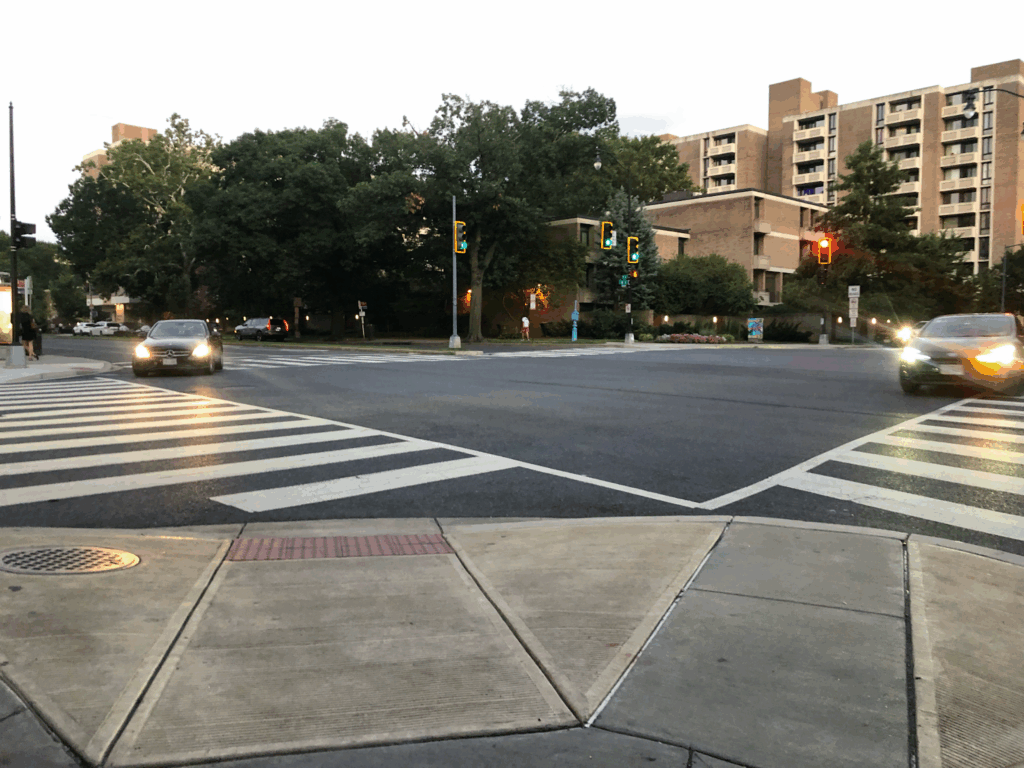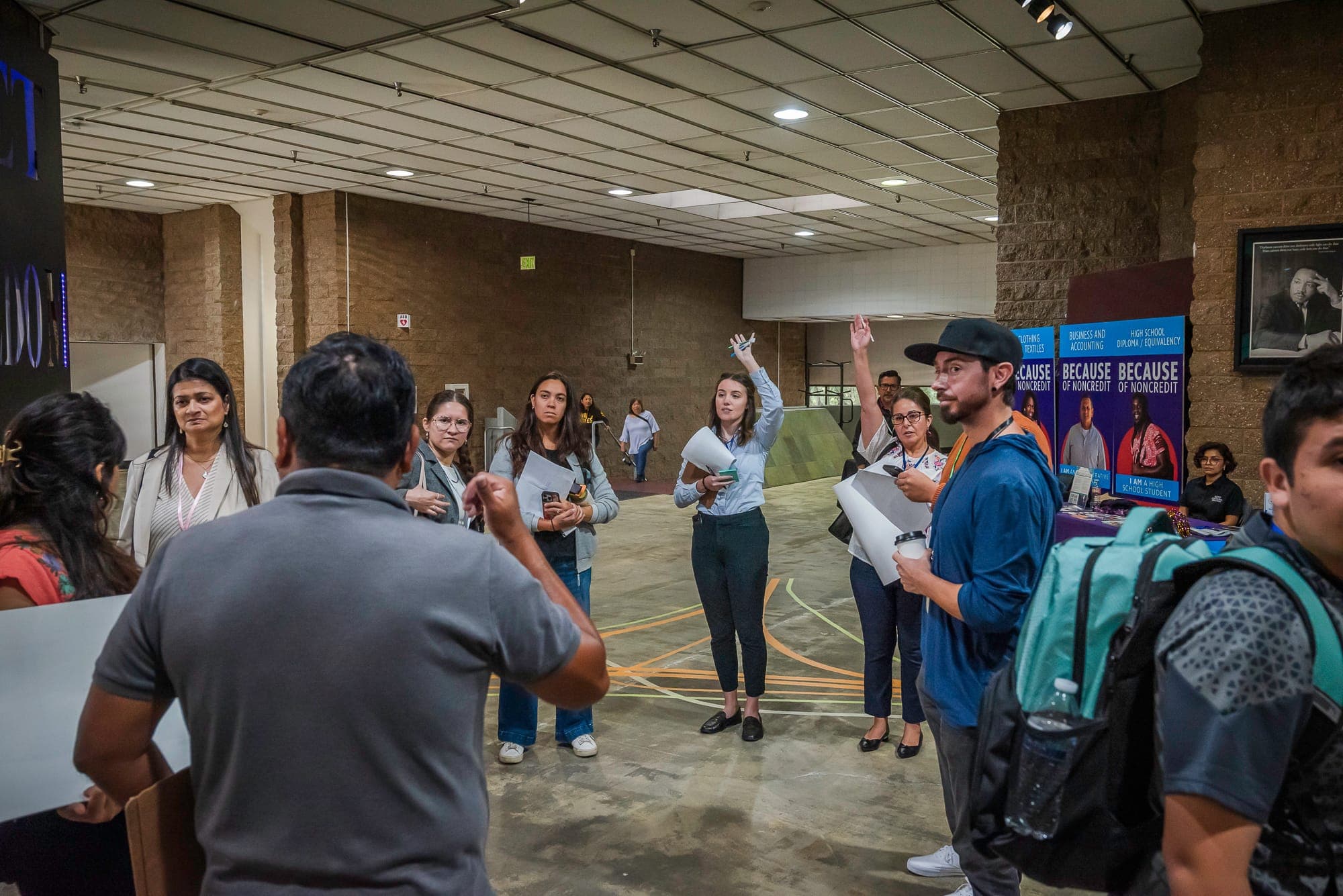
Resource
Bad leadership from DDOT will result in more dangerous streets
Bad leadership from DDOT will result in more dangerous streets
A recent interview in which DDOT Director Sharon Kershbaum discussed transportation in DC set off numerous alarm bells for us at Smart Growth America. The remarks are disappointing on their own and suggest a shocking lack of understanding of (or interest in) street safety. They also call into question her credibility and highlight a lack of strong local leadership.
DC is a great city for walking, biking, and taking transit, but the opinions expressed in the interview, as well as some of the actions we are seeing on the ground, worry us that DDOT is caving to political pressures and the city is stepping back from some of the key things that make it great. Unfortunately, this is all too common when local leaders fail to rise to the challenge of shepherding their communities to a brighter future, and instead settle for a car-oriented status quo.
On Complete Streets
“There’s been a shift in thinking over the past few years. There used to be a real push for Complete Streets. And that concept was ‘we need streets to be all things to all users.’ I believe the reality is the roads just don’t have the dimensions to be all things to all users.” – DDOT Director Sharon Kershbaum
This makes Complete Streets sound like an unrealistic luxury–a red carpet on every street. This is not what the Complete Streets approach proposes, and as the stewards of the Complete Streets movement, we should know. What Complete Streets actually means is that we think about the different ways people get around and make sure they can do it safely. If they need to walk, bike, take transit, or use a mobility device, they shouldn’t have to risk their lives or be horribly inconvenienced. We have designed and built our streets with drivers in mind, the Complete Streets approach simply asks that we extend that same level of priority and protection to everyone who uses them.
DC has had a Complete Streets policy for the past 15 years, and DDOT has operated under this paradigm (sometimes more, sometimes less) since then. We also know that when transportation departments decide that they don’t have the “dimensions” to accommodate all users, the default is ALWAYS to accommodate cars first and foremost.
On Vision Zero
“Every single fatality is a tragedy. There are very little tools that we have in our toolkit to address the nature of these fatalities. Whether it’s an impaired driver, a distracted, or a reckless driver. The fatalities tend to be based on extreme antisocial behavior. Incredibly high speeds, and there is no engineering tool, or even traffic cameras that can solve this problem…This is not something that, as a transportation department, we can get down to zero.” – DDOT Director Sharon Kershbaum
Here, the director attempts to shift blame for dangerous roads and essentially throws up her hands. What can be done when people insist on behaving recklessly and irresponsibly? My immediate reaction to these statements is to ask, if zero is an unrealistic number, what would be an appropriate target for road deaths and serious injuries in DC? What is the reasonable amount of tragedy and pain we should accept? Furthermore, the claim that DDOT has no “engineering tool” to address this issue is an odd take. There are tons of proven strategies to make roads safer. And we at SGA point to numerous, clear, and identifiable patterns that make our roads dangerous by design.
Here, the director gives an anecdote about a recent fatality involving an unlicensed, reckless driver in a stolen vehicle on I-295 to show the inevitability of road deaths. As long as we are cherry-picking cases to illustrate arguments, let me tell you about a fatality that happened in my neighborhood. In April 2025, a 74-year-old woman was crossing the street at 6th and M Street SW (in the crosswalk with the signal) when she was hit and killed by an SUV making a left turn. Unfortunately, this was an event foretold—residents had been raising concerns about this dangerous intersection for years. Furthermore, at the time of the crash, there had been two other fatalities and 19 others injured at the same intersection. The intersection’s wide dimensions, with multiple lanes in each direction, as well as permitted left and U-turns, mean that cars frequently travel at high speeds and make fast, sweeping turns.
I’ve personally had two close calls at this intersection in the past two months. In both cases, SUVs turned left right in front of me while I was in the crosswalk without even slowing down. DDOT is now apparently working on improvements like adjusting bike lanes and removing parking in the area, but there are other tactics that have proven effective, including here in DC. It is just a shame that it took a tragedy to spur action.
 Intersection at 6th and M Street SW.
Intersection at 6th and M Street SW. What does this all mean?
In the current political context, local leadership is more important than ever. At SGA, we have seen strong examples of bold local champions who push against the status quo and hold firm on the things that will make their communities safer, stronger, and healthier. Unfortunately, those qualities are lacking in DC leadership. Just how much blame to give Kershbaum, and how much to her boss—a mayor whom critics argue does not prioritize transportation—is debatable. But in any case, the remarks above not only validate concerns about Director Kershbaum’s appointment, they also signal worrying directions for the department going forward.
I wish I could say that they were just words, but her actions as director seem to match them. Kershbaum repeatedly makes decisions that show that safety is not a top priority, and she prefers the status quo over actions that would make our streets safer. She seems to be either unable or unwilling to educate herself on some of the established and emerging best practices in transportation safety. For example, in the interview, she dismisses the danger of right-on-red turns (now somehow a matter of national debate) simply because soft left turns are more dangerous. This is like the surgeon general declaring that we shouldn’t worry about cancer because heart disease kills more people. However, right turns are in fact dangerous for everyone, but especially for pedestrians and bicyclists. The DC city council has banned right-on-red turns, but DDOT will not enforce the rule.
Furthermore, Director Kershbaum has shown that the safety of bicyclists is not a priority. Prior to her appointment as director, Kershbaum served as acting director of DDOT and played an important role in killing the Connecticut Avenue bike lane project. And just last month, she justified the removal of infrastructure to protect bicyclists on Arizona Avenue because it wasn’t aesthetically pleasing. The director of DDOT is a demanding job, and anyone in this role will face pressures, from car drivers who don’t want to share the road to members of the federal government flexing their power and pressuring local governments to do things that are against common sense and will cause harm (e.g., the plans to review and halt transportation investments based on concerns about DEIA or climate). We need officials who will stand up for the things that work. What we have seen from Director Kershbaum proves that she lacks the knowledge, or backbone, for this.

© 2025 Smart Growth America. All rights reserved
Site By3Lane Marketing







